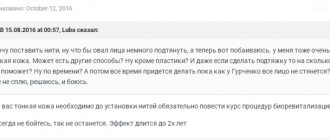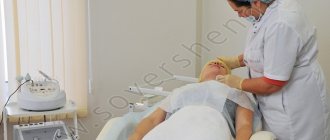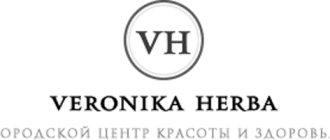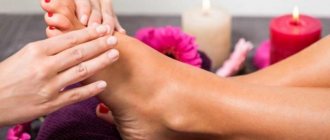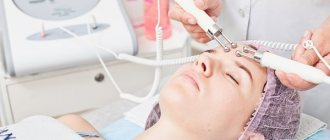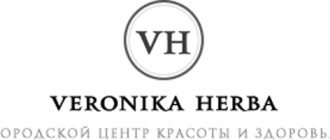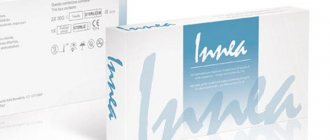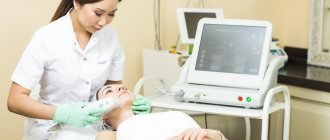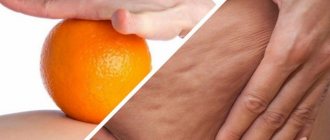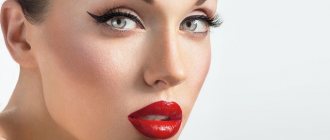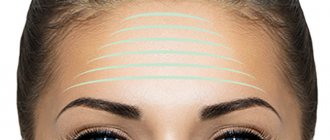From this article you will learn:
- What is mesothread for facelift?
- Mesothreads for face lift: indications and contraindications
- What are the advantages of mesothreads for face lifting?
- What types of mesothreads are there for face lifting?
- How to implement mesothreads for a facelift
- How does a facelift with mesothreads work?
- What effect do mesothreads give for a facelift?
- Do mesothreads for face lift have side effects?
- What to do before and after the mesothread facelift procedure
- Facelift with mesothreads and post-procedure care
- What procedures can be combined with mesothreads for a facelift?
- What to pay attention to before introducing mesothreads for a facelift
- Mesothreads for face lift and the price of the procedure in a beauty salon
In modern cosmetology, the latest technologies to combat age-related skin changes are constantly being developed. But not every new correction method can revolutionize this area. The procedure using mesothreads for face lifting is an innovation that can actually slow down the process of gradual skin changes with age.
What is mesothread for facelift?
Mesothreads
- These are specially processed fibers that are placed into the skin to reduce its stretching and increase elasticity. This procedure is aimed at correcting the oval of the face, tightening the skin in the cheek area and nasolabial folds.
Mesothreads are made of polydioxanone. The surface of the fiber is coated with polyglycolic acid. Both materials have been used in medicine for a long time, their effects on the human body are well known, and therefore they are completely safe. Note that mesothreads are used not only in cosmetology, but also in other areas of medicine (for example, in eye surgery).
This technique was created on the basis of acupuncture, which allows not only to achieve a cosmetic effect, but also promotes relaxation.
The use of mesothreads (thread lifting, bio-reinforcement) is not only the newest way to restore youthful skin, but also a true revolution in aesthetic cosmetology. The operation allows you to achieve the results of four rejuvenation methods at once:
- Botox injections (“beauty injections”);
- Laser lifting;
- Elimination of voids between the skin and tissues by introducing special gels;
- Using oxygen-based products (usually involves the use of special cosmetics designed to saturate the skin with active substances).
Speed is the biggest advantage of a mesothread facelift. According to patient reviews, the procedure for inserting threads takes about an hour, so it can be done without disturbing the usual rhythm of life.
Recommended articles on the topic:
- Facial mesotherapy procedure: pros and cons
- Beauty injections: types of drugs, reviews
- Placental therapy is the secret of eternal youth
Complications of the procedure –
Most types of mesothreads are installed using sharp-pointed needles, which cut tissue and can damage blood vessels and nerves if inserted too deeply into the dermis. Accordingly, the most common complications will be bleeding and hematomas. Numbness of the skin due to injury to nerve trunks is quite rare. If the thread is inserted into the tissue using a blunt-ended cannula (through a puncture of the skin), then the occurrence of the above complications is practically excluded, including the absence of swelling .
Comparison of needle tips and cannula –
Other common complications are exacerbation of herpes and infectious inflammation of the skin at the sites where the needle was inserted. The latter most often happens due to violations of the rules of asepsis and antisepsis, as well as poor postoperative care by the patient of the skin surface at the sites where the needle was inserted. Moreover, if when the threads are inserted too deeply, bleeding and hematomas occur, then when the threads are inserted too superficially, the threads can contour through the skin. When using mesothreads of a smooth linear type, thread migration is possible.
Well, the most common complication is the lack of any aesthetic result. As we said above, the effect of mesothreads can only be seen in patients with fine-wrinkle type of aging. But even in this type of patient, the effect may be absent, for example, due to the individual characteristics of the patient, causing the biodegradation of tissue threads to be too slow. Thus, the effect will be absent not only if the mesothreads are destroyed in the tissues too quickly, but also if they are destroyed too slowly.
Mesothreads for face lift: indications and contraindications
Mesothreads help tighten the skin, restoring an attractive appearance to the face, but they are not able to completely eliminate deep folds and wrinkles. For this reason, thread lifting is indicated only when the skin has not lost its natural elasticity, but the first signs of age-related changes are already noticeable.
Mesothreads are used for the face in the following cases:
- Wrinkles in the forehead area (vertical, horizontal, between the eyebrows), which Botox cannot always cope with;
- Nasolabial fold and labiomental wrinkles;
- Nasolacrimal groove;
- Purse-string wrinkles;
- Ptosis (drooping) of the tissues of the cheeks and submental area;
- Periorbital wrinkles (hernia formations in the tissues of the lower eyelids);
- Folds near the ears;
- Flabbiness and ptosis of the soft tissues of the face;
- Drooping of the outer edges of the eyebrows.
Cosmetologists call the average age when the need for face lifting arises 35 years. However, to prevent age-related changes in the skin, mesothreads for lifting the oval of the face can be used as early as 25 years of age.
Very thin guide needles make it possible to introduce mesothreads with maximum precision, which makes it possible to perform vector lifting and 3D facial modeling without surgical interventions. And in combination with the use of special filler gels, bioreinforcement gives truly excellent results.
Mesothreads are also used to improve the entire body.
A lift with threads up to 9 cm in length will help restore the beautiful appearance of the skin of the thighs, buttocks, knees, and arms that have lost elasticity, and eliminate ptosis (sagging) of tissue on the abdomen and other parts of the body.
Thread lifting of the skin of the abdomen is now especially popular if, for example, it has not recovered after childbirth.
The neck often reveals a person's true age. Defects in the appearance of this part of the body can also be corrected by introducing mesothreads. To correct this zone, linear threads are used, the number and size of which depend on the individual characteristics of the patient.
Breast lifting using mesothreads does not require incisions, so even the smallest scars are excluded after the procedure. Spiral fibers are usually used for this area, as they have the property of returning to their original shape after stretching.
With the help of mesothreads of this variety, the décolleté area is successfully corrected. But a specialist can choose other options for polydioxanone fibers. Despite the wide possibilities of tightening with mesothreads, the effect sometimes does not meet the expectations of patients.
It is not recommended to carry out the procedure in the following cases:
- For bacterial and viral infections;
- During pregnancy, lactation;
- When there are changes in the blood clotting index;
- In inflammatory processes of the soft tissues of the face;
- For thick skin;
- With intense ptosis of soft tissues;
- For oncological diseases;
- For diabetes mellitus;
- If you are allergic to painkillers.
Read material on the topic: Laser facial skin rejuvenation: useful tips and recommendations
Scheme of the thread reinforcement procedure –
If you want to perform the thread reinforcement procedure to prevent age-related changes, then the preparatory stage can be sacrificed. However, if threads are installed to correct changes that have already occurred, patients are usually recommended to undergo a preparatory course, which will not only improve the condition of the skin in itself, but will also increase the effectiveness and duration of the thread reinforcement procedure.
1) Preparatory stage –
If you want to increase the effectiveness of face/neck reinforcement, it is important to prepare the skin for thread implantation. We are talking about injection techniques - this can be a course of mesotherapy or a course of biorevitalization. Depending on the initial condition of the skin, at least 4 mesotherapy sessions may be required (the full course is 10-12 procedures) - with intervals of 7 days between procedures. If we are talking about a more expensive biorevitalization technique, then 3-4 procedures are usually sufficient - with intervals of 14 days between procedures.
The difference between these methods lies in the composition of the drugs used. Biorevitalization procedures use more concentrated and stronger components (compared to mesotherapy preparations). You can learn more about these methods and learn about the differences between the drugs in the reviews using the links below.
→ Mesotherapy regimens → Preparations and biorevitalization regimens
As for the preparation immediately before installing the threads, if there are no contraindications, 2-3 days before the procedure, a drug to increase blood clotting is prescribed (usually Dicinon, 1 tablet 2 times a day). This will reduce the risk of developing hematomas and bleeding. In addition, it is advisable to prescribe an antiviral drug for herpes, such as Acyclovir or Valaciclovir, 2 days in advance. On the day of the procedure, you should not apply any decorative cosmetics to your face.
2) Procedure for installing threads -
The duration of the thread reinforcement procedure will average about 1 hour. Installation of reinforcing threads should be carried out only in a treatment room, with careful adherence to asepsis and antisepsis. There must be a sterile table, the doctor and the patient must be dressed in sterile gowns, and only sterile gloves must be used. The “surgical field” must be carefully processed (as is done during surgical operations).
Anesthesia is very important, especially if the threads will be installed through the nasolabial fold and the ends of the threads will be fixed in the tissues of the upper lip (this area is the most painful). If the threads are installed only in the cheek-zygomatic area and the patient does not have a very high pain threshold, sometimes it is enough to inject an anesthetic directly at the point of skin puncture. If the ends of the threads are fixed in the perioral zone, then cannula anesthesia is necessary.
Cannula anesthesia means that a long cannula (fixed to a syringe with an anesthetic solution) is inserted through a puncture point in the skin. But ordinary dermato-cosmetologists rarely perform anesthesia with a cannula, because... it is more expensive, preferring to prick with a regular needle as the threads are installed. We will omit how anesthesia is technically carried out, and how the anesthetic solution is prepared. The choice of anesthetic in patients at risk is important - patients with diabetes mellitus, bronchial asthma, vascular pathology, and an allergic history.
How to install reinforcing threads for the face: video
Technique for installing threads on the face –
Next we move directly to installing the threads. For this purpose, long cannulas with a blunt end are used. The thread is located inside the cannula, and only its tip protrudes slightly from its spout (Fig. 11). The cannula moves into the tissues, subdermally, i.e. approximately at a depth of 2 to 4 mm. The depth of advancement of the cannula in the tissues should not be too great - otherwise there will be no biostimulating effect on the dermis. It is also impossible to be too superficial, because... otherwise the thread may contour through the skin.
Moreover, in different parts of the face, the depth of the cannula should be different, because this can allow us to either increase the volume of tissue in the cheekbone area, or, conversely, press voluminous fat packets to the bone, making them less noticeable. The depth of advancement of the cannula should also be different for natural folds, for example, where there is more tissue in the area of the fold, the cannula is passed more superficially, where there is retraction of the tissue, deeper. This technique will reduce the severity of the fold.
The tip of the cannulas is not punctured at the end points. Let us remember that the free tip of the thread dangles at the tip of the cannula, and therefore, when the blunt end of the cannula reaches the end point, we simply press our finger on the skin in the area of the tip of the cannula, after which we begin to slowly remove it. Due to the fact that there are notches at the tip of the thread, the cannula comes out, but the thread remains in place. The effect of reinforcement and its duration will be strictly proportional to the number of threads installed.
For the entire cheek-zygomatic area with correction of the nasolabial and labio-mental folds, 9-10 pieces of thread are usually required (on each side of the face). The optimal distance between threads depends on the zone and ranges from 0.5 to 2.5 cm. The installation scheme for reinforcing threads for correcting only labio-mental folds is 3-4 threads on each side of the face. It is basically impossible to correct the corners of the mouth with reinforcing threads, because... this is only possible when using Spring Thread elastic threads.
It is also possible to install reinforcing threads to raise the outer edges of the eyebrows. But the effectiveness of such a technique leaves much to be desired (you can only count on a small degree of correction), with a relatively high price tag.
Correction of hands and abdomen –
Reinforcing threads show high efficiency when correcting hands, especially if threads with a high content of polylactic acid are used. The latter can not only improve the condition of the skin, but also significantly reduce the severity of wrinkles and increase the thickness of the dermal layer of the skin. There are several techniques for arm reinforcement, with threads passing above or below the superficial veins. The first option is preferable, because in this case, the veins are not compressed by the threads.
Abdominal correction with reinforcing threads is an alternative to surgical abdominoplasty. A typical patient portrait for abdominal reinforcement is a woman 28-45 years old, thin, has given birth, with a small thickness of subcutaneous fat, who likes to walk with an open stomach in the summer. In this case, the patient has signs of ptosis (drooping) of the skin and changes in the oval of the navel from vertical to horizontal. Installing reinforcing threads in this case will give a lifting effect and make the navel area more attractive. The effect will last about 6-8 months.
Reinforcement of the mammary glands and buttocks –
With the help of reinforcing threads, you can solve the problem of moderate ptosis, asymmetry or an aesthetically unattractive shape of the female breast. In this case, reinforcing threads act as an alternative to surgical breast lift. Their installation is carried out without cuts. The pronounced effect usually lasts about 8 months, but a small effect will still persist for life - due to the formation of connective tissue strands along the threads (they will serve as stiffening ribs for the tissue).
In turn, a breast lift with lifting threads gives results for 3 years, but their installation is more traumatic, because the threads on one side will have a rigid fixation to the collarbones. In addition to the not very long-lasting effect, another disadvantage of thread breast reinforcement is the high consumption of threads (accordingly, the issue price will be high). Another indication for reinforcement is ptosis of soft tissues and sagging skin of the buttocks. The average duration of the effect of reinforcing threads for these indications will be about 2 years, the maximum – about 5 years.
What are the advantages of mesothreads for face lifting?
There are proven facts showing the benefits of thread lifting. So, seven reasons to use mesothreads to lift the oval of the face:
- A large number of studies have confirmed the hypoallergenicity, biocompatibility and safety of the thread material – polydioxanone. When a lift is performed correctly, contraindications and the risk of side effects are eliminated or minimized;
- Bioreinforcement is accompanied by minimal damage to the skin, so the unnoticeable punctures remaining after the procedure quickly disappear and leave no traces;
- Due to the fact that the mesothreads are very thin, they are absolutely invisible under the skin;
- With the correct introduction of fibers, micro-effusions of blood do not occur. Even when lifting with mesothreads, the eyelids do not leave hematomas, which are inevitable with blepharoplasty;
- The thread lifting procedure is performed under local anesthesia;
- A facelift with mesothreads does not require a hospital stay or long rehabilitation, and the duration of the effect is 1.5-2 years;
- The results of threadlifting are comparable to surgical lifting.
Indications for use
Monofilaments are indispensable for correcting areas of thin, sensitive skin. Thanks to the implant, it is possible not only to achieve lasting rejuvenation, but also to remove drooping eyelids and drooping corners of the mouth. Do not use for ptosis, as well as in areas with dense skin, with pronounced age-related changes.
Important! The greatest effect can be achieved between the ages of 30 and 40 years.
Indications for:
- expression wrinkles;
- oval line offset;
- drooping eyelids;
- crow's feet;
- facial asymmetry;
- drooping corners of the mouth and eyes;
- decreased firmness and elasticity.
Thanks to reinforcement, it is possible to achieve a natural rejuvenation result. The method is ineffective for skin diseases, severe ptosis, bumpy, uneven relief. Combines well with various hardware and injection cosmetology methods.
What types of mesothreads are there for face lifting?
In cosmetology, three types of mesothreads are used depending on the intensity of skin tightening. The specialist chooses the appropriate option based on the condition and characteristics of the skin of the corrected area.
Linear threads
This is the main type of mesothreads. It can also be called preventive. It slows down the aging process of the skin, increases its elasticity by activating the synthesis of its own collagen.
Indications for use:
- Increased skin elasticity;
- Elimination of fine wrinkles around the lips;
- Changing the shape of the lips;
- Strengthening the medial area of the neck.
Spiral threads
This type of mesothreads for face lifting is used to restore volume to the tissues of the cheeks and cheekbones, to eliminate sagging skin.
Indications for use:
- Double chin correction;
- Changing drooping eyebrows;
- Elimination of linear wrinkles;
- Correction of nasolabial folds;
- Facelift.
Needle threads (with multi-directional notches)
Bidirectional teeth are applied to the surface of the needle threads. These mesothreads tighten fabrics well and are suitable for a variety of purposes.
Indications for use:
- Correction of the middle and lower part of the face;
- Skin tightening;
- Body and face contouring;
- Lifting of the lateral lines of the neck;
- Skin tightening of all parts of the body (use needle mesothreads together with linear ones).
Read material on the topic: Facial mesotherapy procedure: pros and cons
Opinion of cosmetologists
On forums, cosmetologists share their experience in installing mesothreads.
The user writes about the ineffectiveness of 10 threads for correcting the nasolabial triangle; for each side, 10 to 15 pieces are required.
The review talks about the positive effect of using mesothreads only when there is slight overhang of the nasolabial bag.
A participant writes that mesothreads do not hold paint grease, but smooth out the relief and increase the density of the skin.
How to implement mesothreads for a facelift
1) Consultation with a cosmetologist.
During the initial appointment, the doctor notes areas that need improvement and draws up a plan for the upcoming facelift using mesothreads with the number of injections required.
2) Preparation for the procedure.
The client takes a comfortable position, adjusts, and if necessary, a cream with an anesthetic is applied.
3) Operation.
The patient is injected with mesothreads into the areas of the face that need correction.
4) Recovery.
After completion of the procedure, the skin surface is disinfected and moisturized using a special cream. The punctures heal within a short time, leaving no traces.
Advantages and disadvantages
The use of monofilaments allows you to restore firmness and elasticity in the eyelids and mouth. It is optimal to carry out correction for unexpressed age-related changes, in this case it will be possible to achieve the maximum effect. Before prescribing a procedure, it is important to weigh all the advantages and disadvantages of thread lifting.
Pros:
- short recovery period;
- alternative to surgery;
- the effect lasts about 2 years;
- use of local anesthesia;
- the patient does not feel discomfort during implantation;
- low tissue trauma minimizes side effects;
- the opportunity not only to look younger, but also to correct facial features;
- the most natural result, natural facial expressions are preserved;
- combined with other aesthetic procedures;
- the material does not cause rejection or allergic reactions;
- There is no need to remain under the supervision of a doctor after the implantation is completed.
Minuses:
- high cost of the procedure;
- the result depends on the experience and skill of the doctor;
- If the rules of the rehabilitation period are not followed, side effects may occur.
How does a facelift with mesothreads work?
The entire operation begins with disinfection of the affected area. An anesthetic cream is then applied to the area. After 15 minutes, the doctor begins the procedure for introducing 3D mesothreads. How many fibers do you need for a facelift? The required amount of material is determined by the planned result. For example, for the area around the eyes, the smallest number of threads is 10. The average number of mesothreads required for a full face is from 50 to 100.
Very thin acupuncture needles are used for the procedure. Such a needle with a thread fixed at its end is inserted into the skin of the defective area, starting from the bottom in an upward direction. First, the doctor stretches the skin to the desired position.
The needle is inserted to a certain point parallel to the surface of the face. Then, by pressing, the edge of the mesothread is fixed. The polydioxanone fiber is detached from the guide needle and placed in the skin, and the needle is removed. The skin is fixed in the intended position and tightened.
The whole procedure takes no more than 20-30 minutes. The effect of a facelift with mesothreads is comparable to the results of plastic surgery. To recover, the patient needs an average of 1-2 weeks, less often – one month. The duration of rehabilitation depends on many factors, such as age, the ability of tissues to regenerate, proper care, hygiene, the professionalism of the specialist, the quality of the operation performed and the material used. During the first time after correction, the patient may experience swelling and soreness of the facial tissues. To relieve discomfort, the doctor may prescribe painkillers.
Read material on the topic: How to remove wrinkles on the face: the most effective methods
Important: chemical composition of mesothreads
As we said above, at the moment almost all Korean, Russian and European manufacturers of mesothreads make them from the inexpensive surgical suture material “polydioxanone” (PDO). This choice is explained by the high biological compatibility of this material, but most importantly, by its extremely low cost. Threads made from PDO are destroyed faster in tissues than threads made from any other materials, and to slow down this process, some manufacturers apply gold plating or a layer of polyglycolic acid (PGA) to the surface of PDO mesothreads.
The second option is threads made from pure caprolactone (PLC), but like polydioxanone, this material also has only minimal biostimulating effects. The third option includes threads made of caprolactone, on the surface of which L-polylactic acid is applied. Such a combined material is called the term “copolymer of L-lactide with caprolactone” (PLLA+PLC). Thanks to polylactic acid, this type of thread has a strong biostimulating effect and really affects the production of collagen in the skin. The same effect is achieved, for example, with the Sculptra filler, which also consists of polylactic acid.
Also, one Russian manufacturer makes mesothreads from 100% polylactic acid. It would seem that it could be better, but structurally these threads belong to the “smooth linear type”, and such threads tend to migrate in tissues. Those. you can place such threads, for example, in the cheek area, and after a month they can be found in a chaotic pattern in the mouth, around the eyes or on the neck. This happens due to facial movements and the absence of notches (hooks) on this type of thread that would securely fix them at the insertion site.
What makes up the effectiveness of mesothreads? –
Mesothreads are the thinnest of all types of threads used for thread lifting. They are not able to serve as a reinforcing frame or retain displaced tissue (i.e., create a lifting effect). Mesothreads have only a biostimulating effect on the skin, which is mediated by the influence of 2 factors - mechanical and chemical. Mechanical biostimulation of tissues is associated with trauma to tissues with needles, with the help of which threads are inserted into the dermal layer of the skin. Such an injury automatically leads to increased regenerative processes and blood microcirculation.
The nature of chemical biostimulation depends on the chemical composition of the threads, and the latter determines 2 points. Firstly, the rate of biodegradation of threads in tissues, on which the total duration of their biostimulating effect will depend (24stoma.ru). Speaking about the biodegradation of threads, two parameters are usually important - 1) the time after which their fragmentation begins, 2) complete destruction. For threads made from regular PDO, fragmentation occurs in 30 days, and complete destruction occurs in just 4-6 months. Somewhat longer for threads made of L-lactide copolymer with caprolactone, even longer for threads made of PDO with gold plating (up to 6-8 months).
But the second and most important thing is that threads of different compositions have different severity of stimulating effect on the fabric. Biodegradation of threads made from a copolymer of L-lactide with caprolactone occurs with the release of molecules of active polylactic acid, which directly stimulates the function of fibroblasts, leading to increased collagen production. As for threads made from PDO, PGA or pure caprolactone, in response to their introduction, an aseptic inflammatory reaction (foreign body reaction) develops in the tissues, which occurs with the development of leukocyte infiltration and migration of macrophages.
Most authors note that after installing PDO mesothreads, the skin becomes more elastic, and conclude that this is due to stimulation of collagen production. However, inflammatory infiltration of tissues is always accompanied by their compaction (you probably remember that edematous inflamed tissues are always increased in volume and tense). That is why, in our opinion, it is better to choose mesothreads made from a copolymer of L-lactide with caprolactone, and in second place - mesothreads made from PDO with gold plating.
What effect do mesothreads give for a facelift?
As a result of the introduction of mesothreads, a dense frame is formed, creating a new, more aesthetic appearance of the face or other part of the body on which the patient underwent bioreinforcement. But more important changes begin later: when polydioxanone fibers dissolve, special substances are released that trigger regeneration processes in the skin through the following processes:
- Stimulation of blood circulation;
- Intensive saturation of skin cells with oxygen;
- Providing tissues with nutrients;
- Launching the natural synthesis of collagen and elastin.
After six months, mesothreads disintegrate into water and carbon dioxide. By this time, new connective tissue has already formed at the site of their insertion, holding the skin in the desired position.
A facelift with mesothreads has a beneficial effect in several directions. Threadlifting has a positive effect on:
- Deep layers of the dermis, stimulating internal processes;
- The outer layers of the skin, eliminating wrinkles and other imperfections.
Usually the effect of the operation is visible immediately, but for a more reliable result it is advisable to repeat the session after 14-16 weeks.
Mesothreads for face lift: before and after photos
Contraindications
There are restrictions for thread lifting:
- pregnancy, lactation;
- menstruation;
- postoperative period;
- purulent-inflammatory process in the area of reinforcement;
- the presence of metal implants;
- autoimmune diseases;
- oncology;
- diabetes;
- tuberculosis;
- acute respiratory diseases;
- increased body temperature;
- tendency to form colloidal scars;
- blood clotting disorder.
Do mesothreads for face lift have side effects?
Like any other operation, a facelift with mesothreads, in addition to the obvious advantages, also has certain disadvantages. Significant disadvantages include possible side effects
:
- Swelling and even swelling of tissues;
- Pain (very rarely - temporary loss of sensitivity);
- Bruises, bruises, hematomas;
- Sensation of the presence of a foreign body in the tissues (one to two days);
- Lumpiness of the skin.
The risk of adverse reactions directly depends on the professionalism of the doctor performing the lift. Even a minor violation of technology can lead to consequences that only surgical intervention can correct. Therefore, when choosing a specialist for thread lifting, make sure of his competence, which must be confirmed by certain documents. Pay attention to patient reviews of his work.
Usually, a facelift (and other areas) with mesothreads is easy, and side effects (if they occur) quickly disappear on their own.
But due to the inexperience of the doctor, the following complications
:
- Severe distortion of the face with the formation of folds. The reason for this complication is the lack of professionalism and experience of the cosmetologist in working with a thin needle-thread guide. This defect can leave marks on the face for up to two years;
- Knots on the skin arise due to non-straightening or incorrect position of the mesothreads in the tissues. This defect will remain on the face until the fibers are completely absorbed, which will take about six months. No doctor can fix this marriage.
Read material on the topic: How to care for facial skin: home care and salon treatments
Reinforcing threads in cosmetology: rating
Below we list the best reinforcing threads for a facelift - reviews of which are most positive among dermato-cosmetologists and plastic surgeons. The facial threads are arranged in a rating, which we believe reflects their effectiveness in relation to each other. In addition to the indicated reinforcing threads, there are a large number of others that are not included in this rating, and which we (for one reason or another) do not consider to be sufficiently effective.
RESORBLIFT threads (France) –
There are several options for threads from this manufacturer. The best option is threads made from 100% polylactic acid, which have the most powerful biostimulating effect on fabrics (compared to threads from any other manufacturer). The threads have multidirectional notches and are installed using a cannula. The big disadvantage of these threads is their high price. The cost of the package alone will be about 35,000 rubles (the package contains 4 threads of 26 cm each).
For example, the cost of the second version of Resorblift threads (consisting of 90% polylactic acid and 10% caprolactone) will be about 24,000 rubles. The price is indicated for a package containing 8 threads of 25 cm. Thus, pay attention to how much cheaper threads made from 90% polylactic acid are (compared to threads made from 100% polylactic acid). It would seem that there is only a 10% difference, but this difference greatly affects the severity of the biostimulating effect. However, even this thread option is very good, and we find it more effective than the options below.
Threads DAR-VIN “Invisible” (Italy) –
The old name of this type of thread is SOFTLIFT Invisible, which occurred due to the change in the name of the manufacturer to DAR-VIN. This type of thread consists of 80% polylactic acid and 20% caprolactone, has multidirectional notches, and is installed using a cannula. There are 2 types of packaging. The first option is a package of 8 threads of 25 cm each (with the threads all packed together), and the cost of such a package is about 14,000 rubles. The second option is 10 threads of 20 cm each, with each thread sterilely packaged separately from the others. The cost of such packaging will be about 26,000 rubles.
APTOS Excellence Visage (Russia) –
These are threads from the Russian manufacturer – APTOS. This type of reinforcing thread consists of 75% polylactic acid and 25% caprolactone. The threads have multidirectional notches and are inserted using a cannula. APTOS is a very high-quality and responsible manufacturer of threads, so you can confidently trust these products. The APTOS “Excellence Visage” reinforcing thread set contains 10 threads of 19 cm each, each of which is preinstalled in an individual cannula.
The disadvantage of these threads is their length. For example, for each long pass you need about 12 cm of thread (especially if you are also making a loop). Therefore, a 19 cm thread is only enough for 1 long pass with a loop, and 1 short piece without a loop. There is also a packaging option “Excellence Visage Soft”, which also contains 10 threads in individual cannulas, but the length of the threads here is even shorter - only 11 cm. It turns out that 1 such thread is used entirely in just 1 pass, and even then it is not enough (if the face large).
The fact that APTOS threads come in individual cannulas is their big advantage. However, the chemical composition of these threads (and, as a consequence, the severity of the biostimulating effect) is inferior to the threads of previous manufacturers, which have a higher content of polylactic acid. In addition, a shorter length of threads significantly increases their cost (in terms of the number of installed thread segments).
Interesting fact: by the way, we can proudly say that in the development of threads of the Italian company DAR-VIN (SOFTLIFT), the Russian surgeon D.A. Gruzdev, who is both the president of the Russian “Society of Thread Technologies”, as well as the leader and practitioner a specialist from his own clinic. The developer of APTOS threads is plastic surgeon M.A. Sulamanidze, well known to thread lifting specialists around the world, who also sees patients in one of the Moscow clinics.
What to do before and after the mesothread facelift procedure
Before the procedure
.
- Two hours before surgery, it is recommended to stop smoking, drinking alcohol and intense physical activity, and do not wash your face with warm water.
- For seven days before and after the procedure, it is not allowed to use products containing acetylsalicylic acid and aloe vera, antihistamines, visit the sauna, solarium, or expose the skin to extreme temperatures.
After the procedure.
Not recommended:
- Chew actively – for 24 hours;
- Do massage and exercise – 14 days;
- Take alcohol, aspirin, anticoagulants orally for three days.
Recommended:
- To reduce swelling, take an elevated position of the head for sleep - three days;
- When handling cosmetics, be gentle on your face, avoid pressing and rubbing during the first days.
Healing period
Complete rehabilitation takes 1-3 months.
Recovery after injections can take up to 5 days and be accompanied by unpleasant symptoms: subcutaneous depressions, tubercles, bumps, and bumps appear. Sometimes there is soreness, cyanosis and loss of sensation.
Rarely does a pulling sensation and slight tingling occur during facial wrinkles. Symptoms do not require medical intervention and disappear on their own.
Drug treatment is necessary if swelling appears in the implanted areas.
Recommendations
Swelling will resolve faster if you adhere to certain conditions after lifting with mesothreads:
- Sleep on your back using a high pillow.
- Apply cold compresses for a week.
- Do not eat hot food for a month.
- Avoid touching your face with your hands for a week.
- Reduce facial expressions as much as possible.
- Do not visit the sauna, bathhouse, solarium, or gym.
- Do not sunbathe, do not overheat or become hypothermic.
- Postpone your visit to the dentist.
- Do not use creams against hematomas.
Buyanov Sergey Yurievich (Expert Doctor):
Recommendations for the rehabilitation period also include excluding, if possible, manifestations of active facial expressions in the first days after the procedure. This is important so that the threads do not become displaced, which reduces the cosmetic effect of the manipulation.
Facelift with mesothreads and post-procedure care
- For washing, you should use exclusively filtered water and special delicate cosmetics (preferably with active oxygen).
- Choose makeup products with a high UV protection index.
- Use oxygen masks, as they help prolong the effect of the procedure.
- After a facelift using mesothreads, do not perform hyaluronic rejuvenation for six months.
- Avoid laser resurfacing procedures, abrasive scrubbing, and acid peeling, as they can accelerate the chemical decomposition of mesothreads.
- Try to eat healthy, reduce or eliminate the consumption of coffee, alcohol, nicotine, sugar, etc.
Patient reviews
On the forums there are mostly positive reviews about the thread lifting procedure.
The review describes a good result and painlessness.
The user writes that, in addition to thread lifting, he uses hardware and injection procedures.
The participant writes about the soft effect of mesothreads, the dependence of the result on weight fluctuations.
The participant writes about the differences between different types of mesothreads and the need for an individual consultation with a cosmetologist.
The review indicates a slight effect after 4 months.
Other reviews can be found on the forum.
What procedures can be combined with mesothreads for a facelift?
The correct combination of thread lifting with other cosmetic surgeries will help make the result of the fight against age-related skin changes more noticeable, effective and lasting. So, what procedures can be combined with a facelift using mesothreads?
- Contour plastic. Its essence is to fill wrinkles and uneven skin with fillers.
- Mesotherapy. It involves the introduction of microinjections of therapeutic agents with anti-aging effects into the skin.
- Laser lifting. Stimulates skin regeneration (renewal) by eliminating its old layers using a laser beam. The procedure allows you to get rid of unevenness and fine wrinkles.
- RF lifting. The process restores collagen and elastin fibers, which stretch as a person ages, and stimulates the body to resume self-sufficiency two to three weeks after a mesothread facelift. To perform laser peeling, you need to wait at least a month.
Read material on the topic: Plasmolifting of the face - a breakthrough in domestic cosmetology
What is thread lifting
People who wonder what mesothreads are often come across the concept of thread lifting. Threadlifting is a facelift technology that uses mesothreads. With the help of such a lift, anyone (in the absence of medical contraindications) can get rid of one, or even several decades, and also correct their face.
Mesothreads for thread lifting are inserted under the skin, after which the formation of a natural frame begins. After a certain time, the threads dissolve on their own, and the frame remains for several years. Then it begins to lose its properties, so a second facelift is necessary.
The thread itself is made of a synthetic material, which is quite durable in its structure, but can completely dissolve in a few months. The threads are attached to special strong needles made of flexible material. This allows the specialist to move the needle and thread in the desired direction.
Threadlifting technology allows you to use mesothreads on different areas of the skin and in deep tissues. Thus, the procedure allows for three-dimensional modeling.
Threadlifting can be used not only for modeling and face lifting. Various types of threads are used to eliminate fine wrinkles and prevent sagging skin, which many people experience as they age. Now threadlifting is popular among different segments of the population, women and men.
Mesothreads are also used for breast lift.
What to pay attention to before introducing mesothreads for a facelift
Nowadays, cosmetic product manufacturers present many different materials, but, unfortunately, not all products are certified. And you shouldn’t forget about this when preparing for a facelift procedure with mesothreads. You need to make sure that the beauty salon or clinic where you are going to have surgery only works with high-quality certified products. Otherwise, this is a violation of the law, and the procedure may harm your health.
The huge demand for procedures using mesothreads has generated supply: more and more salons and clinics are ready to provide such services. But not all of these institutions can afford highly qualified specialists. Without the necessary information, you may well end up with an unqualified cosmetologist. When choosing a doctor, be sure to make sure that he has a certificate and the necessary experience.
A facelift with mesothreads is a very delicate and difficult procedure to perform. It requires serious training and extensive experience from the cosmetologist, and therefore there are few professionals in this field. To avoid getting into an unpleasant situation when choosing a specialist, study the available reviews about his work. It's better if they are only positive.
Having settled on a specific doctor and clinic (or salon) for thread lifting, ask to see a mesothread registration document. Immediately before the procedure, the cosmetologist must provide you with packaging so that you can make sure that its integrity is not compromised and that the contents are sterile. The packaging itself should contain two stickers with information about this product. According to the rules, one of them should be attached to the consent form for the procedure signed by the patient, and the second should be placed on the recommendations for the client issued after the operation.
Following the established procedure is mandatory. The rules are designed to ensure patient safety. Indeed, if complications arise during a mesothread lift, this procedure will help to understand the causes of negative consequences and eliminate analogues of low-quality cosmetic materials.
Types of mesothreads – Mono, Screw, CoG, etc.
If we analyze not the material used to make the threads, but their design (technological) features, then at the moment all mesothreads for face lifting can be divided into 4 types.
Smooth linear thread type (“Mono”) –
To indicate that they belong to this type of thread, some manufacturers add the word “Mono” to the name. Smooth linear type means that the mesothread will be absolutely smooth, without notches. The end section of such a thread will be placed in the hole on the side of the sharp edge of the needle, and the main part of the thread will be located outside (Fig. 4-5). This is the cheapest option for mesothreads. The cost of 1 polydioxanone thread, regardless of size, is about 110 rubles. This is the price at which cosmetologists buy them.
As we said above, the biggest disadvantage of the smooth linear type of threads is that due to the absence of notches (which are designed to fix the thread deep in the tissue), such threads tend to migrate in the tissues towards their lateral ends. And this happens under the influence of facial stress. Theoretically, they can be placed in motionless zones, but tell me - where on the face and neck are there motionless zones? In addition, the installation of this type of threads always occurs with a needle, not a cannula, and that is why their most common complication is the formation of hematomas (24stoma).
Twisted type of threads (“Mono Twin” or “pigtail”) –
The twisted type of mesothreads is designated by the terms “Mono Twin”, “pigtail”. This type differs from the previous one in that not one, but 2 smooth threads without notches are fixed into the hole from the sharp edge of the needle, and along the entire length they will be twisted relative to each other in the form of a “pigtail” (Fig. 6-7). This type of thread is somewhat more effective than the previous one, because... threads twisted relative to each other in the form of a pigtail (about 2 weeks after installation) begin to unravel, thereby slightly increasing the volume of the tissue.
In patients with fine-wrinkle aging and thin skin, they can actually reduce the appearance of small wrinkles and fine lines in the installation area for a certain period. Mono Twin threads from PDO are produced by a very large number of Korean companies and have a purchase price of only about 200 rubles. Mesothreads of the Mono Twin type made from a copolymer of L-lactide with caprolactone are produced by only a few companies, and their cost will be much higher. An example of such threads is
- Aptos® Nano Vitis-4,
- Aptos® Nano Vitis-7.
Thus, when choosing this type of thread, we give preference to the Russian manufacturer Aptos. Moreover, it is worth noting that while the Vitis-4 thread uses a needle as a guide, the Vitis-7 thread uses a safe cannula. If you look at Mono Twin type threads from Korean manufacturers, then only needles are used for their installation (without exception). Installation of 1 Aptos Nano Vitis-4 thread in the clinic costs approximately 1,500 rubles.
Screw type of threads (“Screw” and “Double Screw”) –
The name of threads of this type often contains the word “Screw”, which means “screw”. The screw type means that the smooth thread will be wound in a spiral around a hollow sharp needle from the outside, and its end section will also be fixed into the hole on the side of the sharp edge of the needle (Fig. 8). This type of thread can be divided into – 1) Mono Screw, 2) Double Screw. In the first case, only one smooth thread will be wound spirally around the needle, and in the second case, two threads at once. The cost of such threads will be from 200 and 250 rubles per 1 thread, respectively.
Serrated thread type (CoG, 2D, 3D, 4D) –
In the name of threads of this type of thread you can often see the word “COG”, which in translation means “tooth” (Fig. 11). Patients often call them Kogi threads. Thus, the jagged type means that the threads will have notches that will prevent the migration of threads in the tissues, and also, according to the manufacturers, will perfectly tighten the skin. Compared to other types of mesothreads, they are probably the best, but you should not indulge yourself in the illusion of lifting when using them, because mesothreads are, in principle, too thin and are not able to hold moving fabrics, even with notches.
Cog type mesothreads can differ greatly from each other (Fig. 12). First of all, we are talking about notches, which can be one-sided, two-sided, or multi-directional. The very first Cog threads had single-sided knurls, and over time they were replaced by 2D and 3D knurled threads (the latter differ from each other in that the double-sided knurls are located either in the same plane or three-dimensionally. There is a more modern 4D knurling layout, but this is of great importance primarily for reinforcing and lifting threads, with the help of which it is possible to stretch and hold tissue in a displaced state.
For mesothreads, which in principle are too thin to serve for lifting or reinforcement, it will be very good if the notches are only 3D. The second difference between COG threads from different manufacturers is that both a needle and a cannula can be used as a thread guide. If a needle is used, then there are 2 options for arranging a thread with a needle - a standard linear one (as for smooth “Mono” type threads) and a screw type “Cog Screw” (Fig. 13). Inserting a thread with a cannula is less traumatic and causes fewer complications.
Important: above we talked about COG type mesothreads, but there are other types of threads with notches - reinforcing and lifting threads, which have a significantly greater thickness (compared to thin mesothreads). The greater thickness allows the threads not to dissolve too quickly, and also allows them to hold the load and hold the tissue being moved. These threads include Resorblift® threads, Beaute Lift V-Line® threads (models Rose-2D, Rose-3D and Cog-2D), Aptos® Excellence Visage threads and others. We have listed here only reinforcing threads, but if they are also installed with an additional fixing loop, then they will give not only a reinforcing, but also a lifting effect.
But stretching fabrics with standard COG mesothreads is useless. As we have already said - due to their small thickness and lack of rigid fixation to the ligaments and aponeuroses - they are, in principle, unable to have either a lifting or reinforcing effect. But trying to tighten something with them, for example, using the “loop” technique, which is successfully used when implanting reinforcing threads, is impossible, because this will create a load that thin mesothreads simply cannot withstand and will break. As for the lifting effect from this type of thread, it can be expressed approximately at the level of statistical error (that is, it seems to probably exist, but it seems to be not there).
Manufacturers of mesothreads (thread characteristics) –
* where PDO is polydioxanone, PLLA is polylactic acid, PLLA+PLC is a copolymer of polylactic acid and caprolactone, PGA is polyglycolic acid.
When is it recommended to use
Mesothreads are a good way to rejuvenate the skin of the face and neck by tightening individual areas of tissue. Most often, women over 40 years of age apply for this procedure. But there are many cases when people under 30 years of age turn to a cosmetologist for a similar procedure. The use of mesothreads helps eliminate not only the signs of aging, but also some appearance flaws that appear at any age:
- Drooping eyelid. A drooping or drooping eyelid is not considered a significant cosmetic defect, but many consider it a drawback. Removing drooping eyelids is quite easy with the help of smooth mesothreads. The effect lasts for several years.
- Drooping of the eyebrows, corners of the eyes and lips . Such defects may appear with age or be congenital. By lifting the corners of the eyes and lips, you can not only rejuvenate your face, but also give it a more attractive appearance.
- Wrinkles . Any wrinkles, from crow's feet near the corners of the eyes to deep long wrinkles on the forehead and cheekbones, can be smoothed out using mesothreads. In this case, you can use a comprehensive facelift, in which a rigid frame is formed. It not only gets rid of existing wrinkles, but also prevents the formation of new ones.
- Loose skin. A person can lose weight or gain weight several times throughout his life. If at a young age the skin is able, due to its natural elasticity, to smooth out and adapt to soft tissues, then later this property disappears. With the help of mesothreads you can tighten the skin without resorting to the services of a plastic surgeon.
On video mesothreads for facial skin tightening:
You can find out when the effect of biorevitalization is visible by following the link.
Young women under 30 who would like to tighten their skin using thread lifting are increasingly turning to cosmetologists. At this age, it is better to use an innovative rejuvenation method called laser thread lifting. It has fewer contraindications and is completely painless. The effect can be observed immediately, but the final shape of the face takes several weeks to form as collagen bases form on the threads.
To improve the effect, cosmetologists recommend performing other cosmetic procedures along with the introduction of threads, such as chemical peeling, injections of vitamins and Botox, etc.
At the following link you can find out what bioreparation is.
